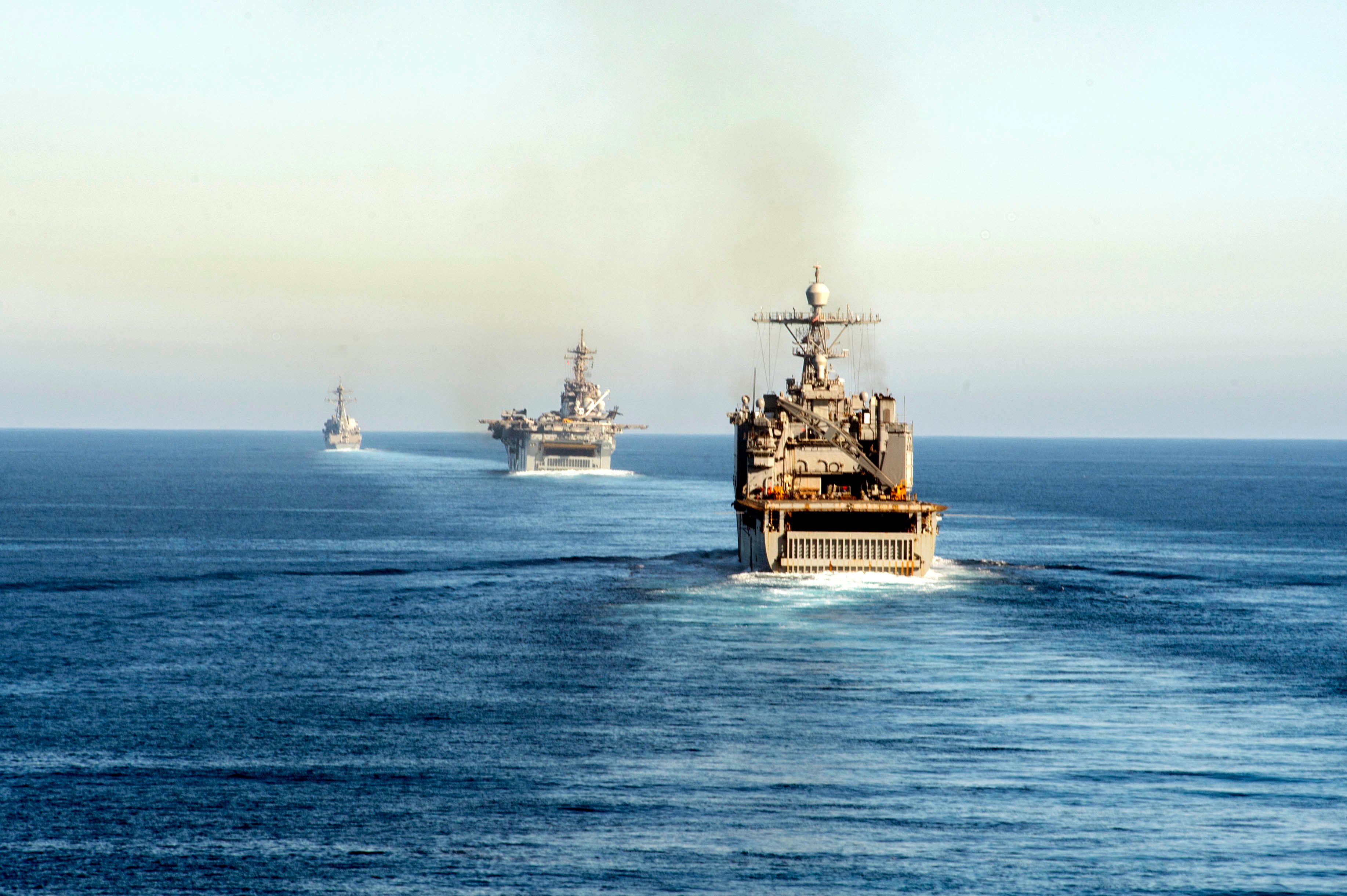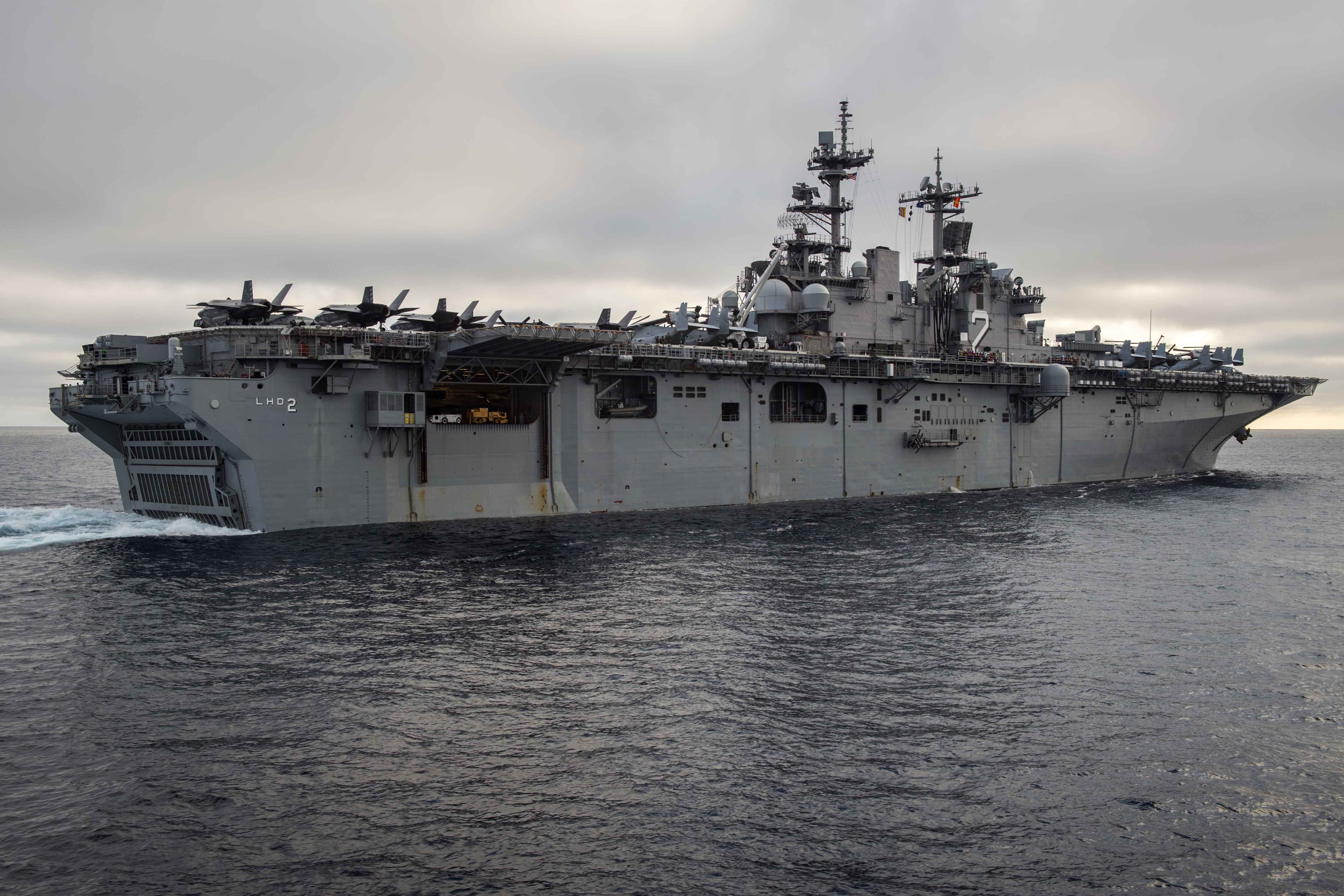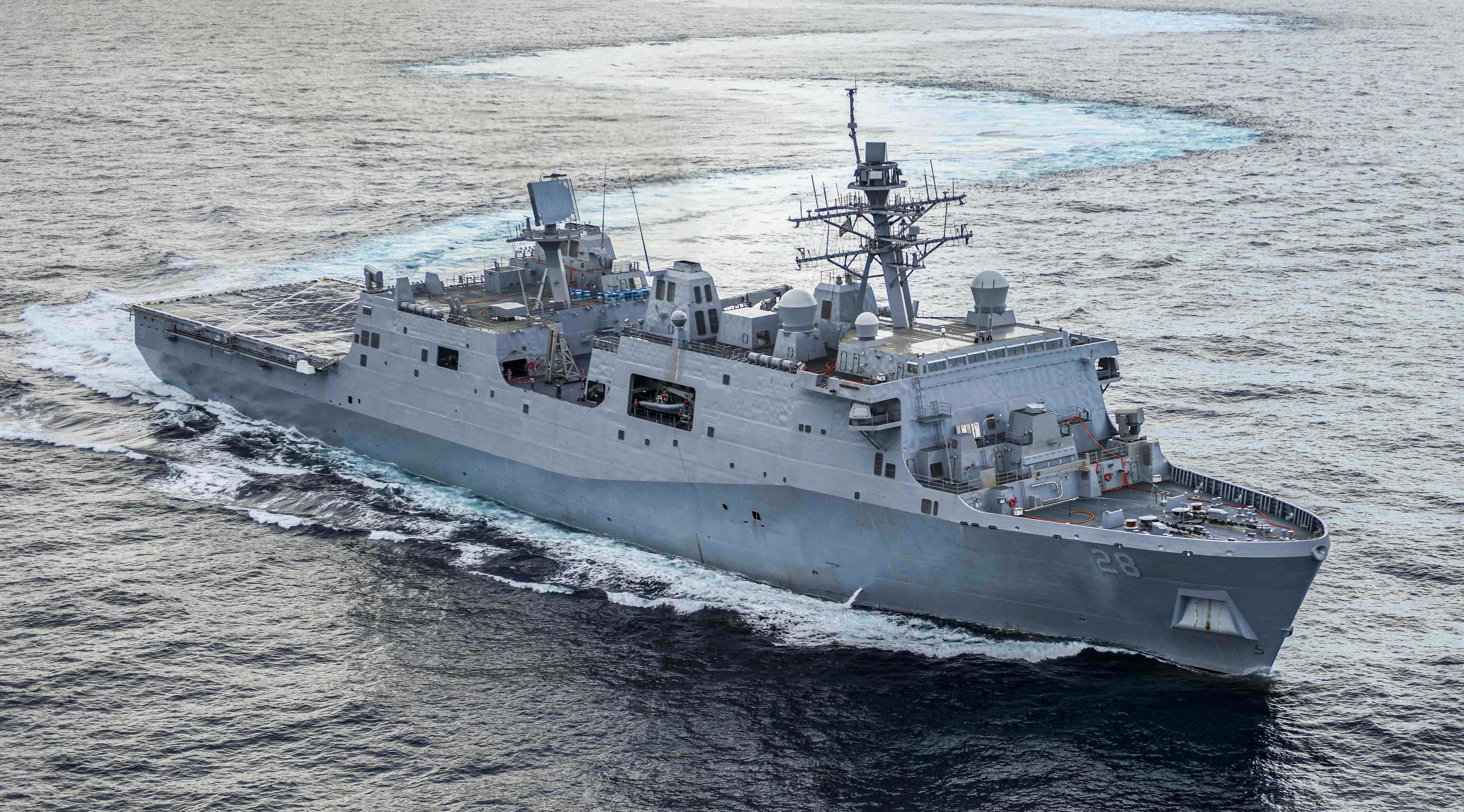
WASHINGTON, D.C. – The Navy could keep its amphibious ships in service for more than 50 years and its Littoral Combat Ships for up to 35 years, as the service looks for ways to increase the size of the fleet in the nearer term by extending the life of today’s ships, according to Naval Sea Systems Command.
NAVSEA Commander Vice Adm. Tom Moore said the Navy would not reach its goal of having 355 ships until 2052 if it got rid of in-service ships at the usual pace and relied on increasing the pace of new shipbuilding to grow the fleet. If all of today’s ships remain in service longer, though, the Navy could be operating a 355-ship fleet by 2032 – a full two decades sooner.
“If you want to keep all the classes out to as long as you can keep them – and there’s cost associated with that – we think we can get to 355 now in the early 2030s, 2032 to 2035. That’s a significant improvement, and it’s something that we’re looking at pretty seriously,” Moore said while speaking at the American Society of Naval Engineers’ annual Technology, Systems and Ships event.
“The budget that just came out funds to keep the cruisers around a little longer, and the Navy’s taking a serious look at do we want to keep the other ships around, in particular the DDGs, going forward.”
Vice Adm. Bill Merz, the deputy chief of naval operations for warfare systems (OPNAV N9), already committed to keeping Arleigh Burke-class destroyers around for 45 years, instead of the planned 35. But Moore said that’s just the tip of the iceberg.
According to a memo Moore wrote to Merz in late April, Wasp-class amphibious assault ships could be extended from 40 years to between 46 and 53 years, San Antonio-class amphibious transport docks could be extended from 40 to between 47 and 53 years, Whidbey Island-class dock landing ships could be extended from 40 to between 45 to 52 years, Littoral Combat Ships could be extended from 25 years to between 32 and 35 years, Lewis and Clark-class dry cargo ships could be extended from 40 to 50 years, and more.
The blog Cdr. Salamander first noted the existence of the memo last month.
“The bottom line is, if you’re willing to do the maintenance, from a naval architecture standpoint… we can manage all that. So I’m not worried about the service life of it,” Moore said.
“I’m more focused on the combat systems side of it, but I believe in this era of open architecture, Aegis, vertical launch systems, that the combat system can maintain its relevance for a long period of time. That was not the case when I was a young officer serving on a DDG-2 Adams-class destroyer. … The opportunity is there, and I think we’re going to work on that.”
Merz told USNI News in April that the Navy keeping all its destroyers around until 45 years of service would get the fleet to 355 ships by 2036 or 2037, though it would be a destroyer-heavy mix of ships compared to the Navy’s ideal composition of a 355-ship fleet. In particular, that fleet would be lacking attack submarines and some amphibious ships compared to the Navy’s stated need.
The Navy hopes to extend the life of up to five Los Angeles-class attack submarines, though the SSNs have to be extended on a hull-by-hull basis instead of the class-wide extension the Navy agreed to on the DDGs. Due to strict engineering requirements to submerge, those hulls must be in very good shape; and due to the need to refuel the SSNs after their planned service life, and the Navy having only five spare reactor cores to devote to SSN life extensions, only up to five could be extended.

On the amphib side, Moore told USNI News he was confident they could serve in the fleet for 50 years or more, though top Navy leadership has not publicly committed to extending their service life the way it did for the DDGs.
“We sell our FFGs to other countries and they keep them for another 20 years. We keep carriers, Enterprise, around for 52, 53. And we’re going to look at service-life extensions for Nimitz-class [aircraft carriers]; Congress asked us to do that. So from an HM&E standpoint, steel hulls, we know a lot about them and we’re pretty confident we can operate them for the intervals we gave to the Pentagon,” Moore said after his speech.





